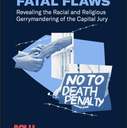2005
By Austin Sarat
By denying clemency to Stanley “Tookie” Williams Arnold Schwarzenegger
did more than allow another execution to be carried out. He broke faith
with the understandings of those who wrote our Constitution and damaged
the intricate balance of our constitutional government. Casually
dismissing Williams’s contention that he had been “reformed
and…redeemed for his violent past,” Governor Schwarzenegger’s treated
his own clemency power as a narrow and limited one. As he explained, the
clemency power should not be used “to nullify the jury’s decision of
guilt and sentence.…” except to prevent miscarriages of justice. This
is not the way the clemency power was understood by those who made the
power “to grant pardons and reprieves” part of our constitutional
system, nor, throughout most of our history, by those charged with
interpreting that power or with exercising it.
Although the original versions of the New York and Virginia Plans that
provided the frameworks for debate at the Constitutional Convention
included no provisions for pardon, revisions to both plans eventually
did. The power that emerged from the convention was regarded by the
Framers of the Constitution as necessary to a humane and effective
scheme of government. Defending executive clemency Alexander Hamilton
said, “Humanity and good policy conspire to dictate, that the benign
prerogative of pardoning should be as little fettered as possible.“
Hamilton thought that the pardon power would and should be used
mercifully, otherwise “justice would wear a countenance too sanguinary
and cruel” and, in its merciful use, would ennoble those who wielded it.
Hamilton’s understanding of clemency has been reiterated throughout
American history by judges and politicians alike. Writing in 1833, in
the first clemency case to reach the United States Supreme Court, Chief
Justice John Marshall called pardon “an act of grace, proceeding from
the power entrusted with the execution of the laws.…” Twenty years
later, the Supreme Court again embraced a very broad view of the
clemency power, saying “Without such a power of clemency, to be
exercised by some department or functionary of a government, it would be
most imperfect and deficient in its political morality, and in that
attribute of Deity whose judgments are always tempered with mercy.” In
1866 Justice Field wrote approvingly of what he called the “benign
prerogative of mercy.”
Lest anyone think that this is an outmoded, old fashioned conception of
clemency, from time-to-time a similar standard has been embraced by
governors and judges in our own era. Terry Sanford, Governor of North
Carolina from 1961 – 65, provides one example of such a view. “The
Executive,” Sanford wrote “is charged with the exercise in the name of
the people of an … important attitude of a healthy society — that of
mercy beyond the strict framework of the law.… Executive clemency does
not involve the changing of any judicial determination. It does not
eliminate punishment; it does consider rehabilitation. To decide when
and where such mercy should be extended is a decision which must be made
by the Executive.…It falls to the Governor to blend mercy with
justice, as best he can, involving human as well as legal
considerations, in the light of all circumstances after the passage of
time, but before justice is allowed to overrun mercy in the name of the
power of the state.”
Chief Justice William Rehnquist, in a 1993 Supreme Court decision,
called clemency the sovereign’s “power to extend mercy, whenever he
thinks it is deserved.…”, and five years later said it was “a matter
of grace.” Rehnquist suggested that this power was designed to allow the
executive “to consider a wide range of factors not comprehensible by
earlier judicial proceedings and sentencing determinations.”
Yet, at least in the context of capital cases, this broad understanding
of clemency steadily has been losing favor along with clemency itself.
From 1994 – 2004 (excluding former Illinois Gov. George Ryan’s mass
commutation of his state’s death row) 25 clemencies were granted across
the entire country; forty years earlier in the decade 1954 – 1964 there
were 198 clemencies. As one commentator puts it, capital clemency has
“died its own death, the victim of a political lethal injection and a
public that overwhelmingly supports the death penalty.” Thus at the
outset of his administration, then Texas Governor George Bush embraced a
standard for clemency that all but ensured that few if any death
sentences would be seriously examined. “In every case,” [Bush] wrote in
A Charge to Keep, “I would ask: Is there any doubt about this
individual’s guilt or innocence? And, have the courts had ample
opportunity to review all the legal issues in this case?” During his six
years as governor 150 men and two women were executed in Texas; Bush
allowed the execution to proceed in all cases but one. As the journalist
Alan Berlow notes, “This is an extraordinarily narrow notion of clemency
review: it leaves little, if any, room to consider mental illness or
incompetence, childhood physical or sexual abuse, remorse,
rehabilitation, racial discrimination, the competence of the legal
defense, or disparities in sentences between co-defendants or among
defendants convicted of similar crimes.” It leaves little room for the
kind of claims made by, and on behalf of, Tookie Williams. It is this
cramped conception that animated Schwarzenegger’s decision to allow
Williams’s execution to proceed.
Many governors today have turned crime fighting, tough-on-crime policy
into a strategy for building political coalitions and strengthening
their electoral prospects. Many are afraid that granting clemency to
convicted murderers will leave them vulnerable to damaging charges that
they are soft-on-crime. As a result, they have let the clemency power
atrophy rather than courageously exercising their discretion to accord
mercy to the condemned. In doing so they have departed from the original
understanding of that power and historical practice. In the Williams
case, Governor Schwarzenegger missed an opportunity to reverse that
trend and did a disservice not only to Tookie Williams, but to all of us.
- — -
Austin Sarat is William Nelson Cromwell Professor of Jurisprudence and
Political Science and Five College Fortieth Anniversary Professor at
Amherst College and author of Mercy on Trial: What It Means to Stop an
Execution
Copyright 2005 The Jurist


